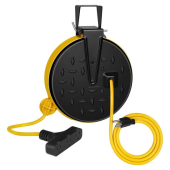Actually the original comment about the Anderson 175A - I meant for the DC connection of the batteries to a mobile inverter, so it can be moved in component parts, but quickly reassembled. Most of the inverters will need at least 150A, - I used 175A because I had them.
For the PV, you are correct that typical amperage on a few panels will be well below 50A, and an Anderson 50A would work here, and is rated for DC. But an Anderson connector is only 2 conductors, if you would like to have a ground to the panel frames, then you need something with 3 conductors. And if it is mobile, likely a floating ground, since few people are going to take the time to drive in a ground rod, it may depen on the applicantion, OP was talking about a back up system for family member's home, so there may be ground connection in that set up.
Can a NEMA connector be used for DC? - seems to me that a few PV panels would mean low amperage and the NEMA plugs all seem more robust than an MC-4 carrying the same current.



